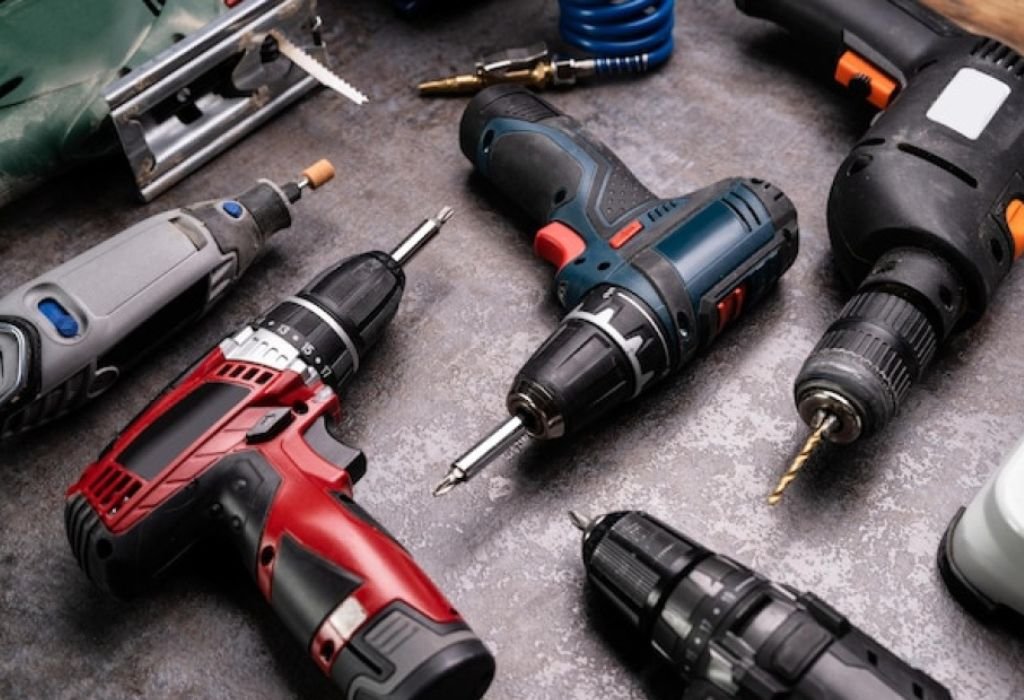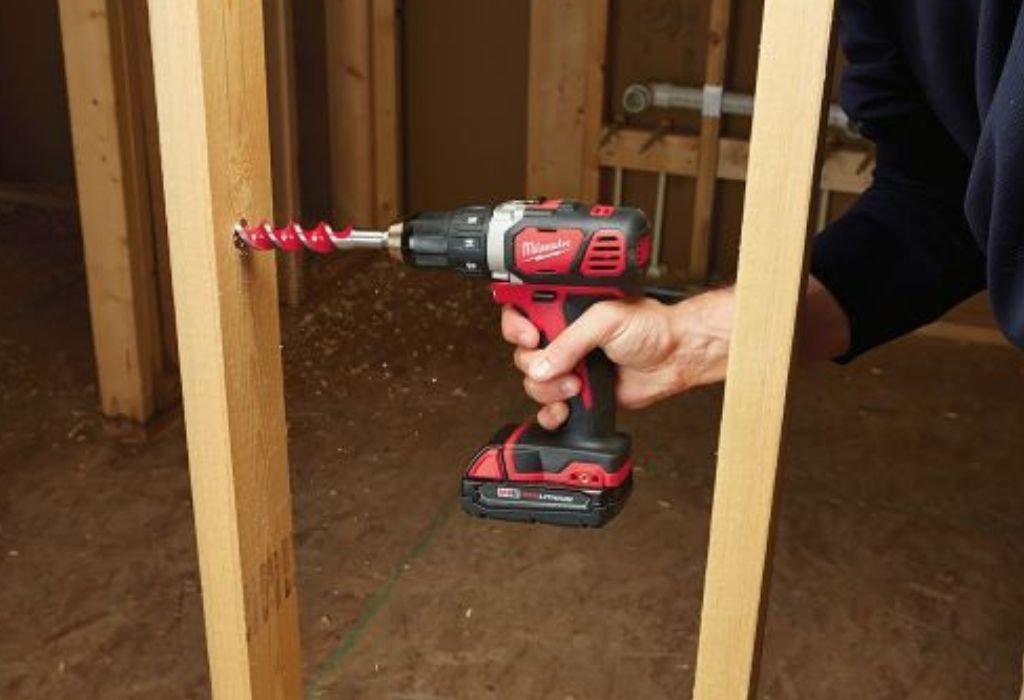Imagine facing a stubborn nut or rusted bolt when the only heavy-duty tool nearby is a rotary hammer.
The question quickly arises: can you use sockets with a rotary hammer to break it loose?
This curiosity often comes from the tool’s sheer power. Rotary hammers are built for masonry, delivering thousands of blows per minute to pulverize concrete.
An impact wrench, however, is purpose-designed for fastening, producing controlled rotational torque that sockets require. Tests show impact wrenches can deliver torque several times higher than standard drills or hammer drills 【source example: https://www.protoolreviews.com/impact-driver-vs-impact-wrench/】.
Trying to force the wrong tool into the job can carry risks. Rotary hammers rely on axial impacts, not rotational strikes, which means sockets may slip, fasteners can round off, and safety is compromised.
According to occupational safety reports, prolonged vibration exposure from misused tools significantly increases the risk of hand-arm vibration injuries 【source example: https://www.hse.gov.uk/vibration/hav/】.
Yet, the idea of using adapters to bridge SDS-Plus chucks to square-drive sockets remains tempting. Tool shops and online forums discuss SDS-to-socket adapters, raising hope that one tool could serve multiple roles.
This possibility sparks a balance between cost-saving convenience and safety-first practices.
The real challenge lies in understanding whether a rotary hammer’s design can truly substitute for an impact wrench. By examining the mechanics, available adapters, and expert guidance, it becomes clear where the line should be drawn between creative improvisation and proper tool use.
Rotary Hammers, Hammer Drills, Impact Drivers & Impact Wrenches — What’s Different?

Rotary hammers and impact wrenches may look similar in size, but their internal mechanisms are worlds apart. A rotary hammer uses axial hammering to pulverize masonry, while an impact wrench creates rotational strikes that sockets require for torque transfer.
What action does a rotary hammer use?
It delivers axial blows combined with rotation, designed to break concrete and masonry efficiently.
Which tool is designed for sockets?
An impact wrench with a 1/2-inch square drive is purpose-built for socket use and fastener removal.
Is a hammer drill the same as an impact wrench?
No, a hammer drill adds light forward tapping, but it lacks the high rotational torque needed for sockets.
Why does torque matter for sockets?
Sockets demand consistent rotational torque, something a rotary hammer cannot provide but an impact wrench delivers easily.
Can you use sockets with a rotary hammer here?
While adapters exist, the rotary hammer’s mechanism is not optimized for sockets, making it a poor substitute for an impact wrench.
So…Can You Use Sockets with a Rotary Hammer?
Technically, yes, but the answer comes with strong caution. Adapters allow SDS-Plus tools to accept sockets, yet performance and safety are far from ideal.
Do adapters exist for SDS-Plus to 1/2-inch drive?
Yes, several manufacturers sell them for use with rotary hammers.
When might it work?
Only for very light, low-torque applications in rotation-only mode, but results are inconsistent.
What are the main risks?
Excessive vibration, poor torque transfer, socket slippage, and even tool or fastener damage.
Will it replace an impact wrench?
No, because impact wrenches deliver far greater controlled torque than rotary hammers ever could.
Could it void warranties?
Yes, many tool manufacturers warn against unapproved accessories that may cause misuse or damage.
Understanding Adapters: SDS Chucks, Square Drives, and Limitations
An SDS-Plus shank locks securely into rotary hammers, while impact wrenches rely on a square-drive anvil for sockets. Adapters try to bridge this gap but cannot change the tool’s hammering action.
What is SDS-Plus?
A slotted drive system designed for masonry bits and chisels in rotary hammers.
What is a 1/2-inch square drive?
It is the standard output shaft on impact wrenches used to hold sockets securely.
Do “high-torque” adapters fix the issue?
No, they strengthen the adapter itself, but the rotary hammer still lacks the proper torque mechanics.
Is a 3-jaw chuck better for sockets?
No, 3-jaw chucks grip round bits, but sockets need a square drive to transfer torque.
How do torque levels compare?
Impact wrenches often exceed 200 ft-lbs, while drills or hammers fall far below this threshold.
Practical Scenarios: When People Try This (and What to Do Instead)
People often attempt to use rotary hammers with sockets for tasks like stubborn bolts or anchor bolts. While creative, the results are usually poor compared to using an impact wrench.
Light duty hex heads—could a rotary hammer do it?
Yes, but performance will be slow and inconsistent.
Removing lug nuts?
No, a rotary hammer will struggle and may damage sockets, unlike an impact wrench.
Driving masonry anchors?
The rotary hammer should drill the hole, but driving screws requires an impact driver.
Will cheap adapters last?
Likely not, as they twist and wear quickly under high stress.
What’s a better alternative?
Renting or borrowing an impact wrench is safer and more effective than improvising.
Safety, Control, and Ergonomics
Using a rotary hammer with sockets risks safety due to vibration, poor torque control, and socket slippage. PPE and proper control techniques are critical.
Is vibration a real concern?
Yes, hand-arm vibration can cause long-term health problems if ignored.
Does the clutch help?
Some models include clutches, but they are tuned for drilling, not socket work.
How to prevent socket ejection?
Adapters often lack secure detent pins, increasing the chance of sockets flying out.
What PPE is essential?
Safety glasses, gloves, and firm two-handed operation are mandatory.
What’s the injury risk?
OSHA reports thousands of injuries annually from handheld power tool misuse OSHA.
If You Still Must Try It: Minimum Viable Setup & Technique
This method is not recommended, but if attempted, it should be done with extreme care.
Which mode should be used?
Always use rotation-only mode; never combine sockets with hammering.
What about BPM settings?
Disable hammering to prevent sockets from cracking or shattering.
What size fasteners are safe?
Only very small fasteners with minimal torque requirements.
Any accessory checks?
Use heavy-duty SDS-to-square adapters with hardened steel.
Final reminder
If the fastener resists, stop and switch to an impact wrench.
Best-Practice Alternatives & Tool Pairings
The smartest approach is to pair the right tools: rotary hammer for drilling, impact driver or wrench for fastening.
What’s the ideal combo for anchors?
Drill with the rotary hammer, then use an impact driver for screws.
Automotive or heavy fasteners?
Always use a 1/2-inch impact wrench with rated sockets.
Do universal chucks help?
No, they adapt drill bits, not sockets or torque delivery.
Any budget options?
Renting impact tools is often cheaper than replacing broken parts from misuse.
What’s the productivity gain?
Correct tool pairing saves time and avoids costly damage.
Buyer’s Notes: Adapters & Accessories

If someone insists on trying, choosing the right adapter is critical.
Which interface is most common?
SDS-Plus rotary hammers with 1/2-inch square drive adapters.
Any reputable examples?
Bosch and Makita offer SDS accessories rated for torque transfer.
Will cheap adapters fail quickly?
Yes, under repeated stress they bend, twist, or crack.
Do you need impact sockets?
Yes, always use sockets rated for impact or torque loads.
Is this a long-term solution?
No, it is a workaround, not a true replacement for an impact wrench.
FAQs
Can you use sockets with a rotary hammer?
Yes, with an adapter, but it is not safe or effective compared to an impact wrench.
Is there an SDS-to-square adapter available?
Yes, but it is a compromise with limited effectiveness.
Why is an impact wrench better?
Because it delivers rotational impacts with controlled torque.
Can hammer mode damage sockets?
Yes, hammering can shatter sockets and damage fasteners instantly.
What’s the safest way for masonry anchors?
Drill with a rotary hammer, then drive screws with an impact driver.
Conclusion
Can you use sockets with a rotary hammer? The simple answer is yes, but it is not recommended. Adapters exist, but the mismatch in mechanics makes the setup unsafe and inefficient.
For speed, safety, and durability, use a rotary hammer for drilling and an impact wrench or driver for fastening. When in doubt, rent or borrow the right tool instead of forcing the wrong one. The right pairing not only saves time but also protects your tools and your health.

I’m John F. Nicholas, the founder, lead writer, and drill enthusiast behind 101drill.com. With years of hands-on experience in power tools and DIY projects, I created this platform to share practical knowledge, expert tips, and real-world insights to help others master the art of drilling.
